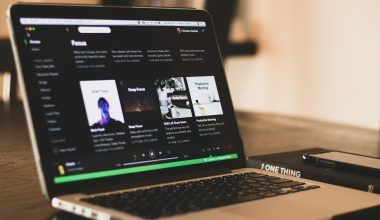Rap music isn’t just about rhymes; it’s a way of telling stories. It began as a voice for the unheard, and now it’s one of the most loved music styles worldwide. Popular rap music mixes words, rhythm, and beats to create something magical. Whether you’re a fan of old-school legends like Tupac or new artists like Cardi B, rap has something for everyone.
In this blog, we’ll explore how rap started, how it grew into what we hear today, and why it’s so powerful in shaping culture.
How Rap Music Was Born: The Beginning of a Movement
Rap music began in the 1970s in the Bronx, New York. At the time, the streets were alive with block parties where DJs used turntables to create funky beats. One of these DJs, Kool Herc, started using breaks (short sections of songs with just drums) to create rhythms that people could dance to. This was the beginning of rap.
Soon, MCs (Masters of Ceremony) began adding rhymes over these beats. They talked about their lives, neighborhoods, and dreams. It wasn’t just music—it was a way to express feelings and share stories. This unique style caught on quickly, and rap became the heartbeat of the Bronx.
The Growth of Rap Music: How It Became Popular
In the 1980s, rap music started reaching more people. Groups like Run-D.M.C. and artists like LL Cool J made rap famous across America. They added their flair to the music, mixing it with rock and pop. Run-D.M.C.’s collaboration with Aerosmith on “Walk This Way” became a massive hit, proving that rap could mix with other music styles.
As rap grew, it also became a tool to speak up about serious issues. Groups like Public Enemy used their music to talk about racism and social injustice. Rap wasn’t just about fun beats anymore; it was about making people think.
The Golden Era of Rap: 1990s
The 1990s are called the “golden age” of rap. During this time, artists like Tupac Shakur, Notorious B.I.G., Nas, and Snoop Dogg created unforgettable music. Their songs were not just about rhythm but about storytelling. They painted pictures of their lives, struggles, and dreams.
West Coast rap and East Coast rap became big movements. The West Coast, led by artists like Dr. Dre and Tupac, had a smooth and funky style. On the East Coast, Biggie and Nas focused on lyric-heavy songs. This friendly competition pushed rap to new heights.
The Global Spread of Popular Rap Music
As the internet grew, rap music started reaching every corner of the world. In the 2000s, artists like Eminem, Jay-Z, and Kanye West brought rap to mainstream audiences globally. Eminem, for example, told deeply personal stories through his music, connecting with millions.
Rap wasn’t just limited to America anymore. K-pop groups like BTS added rap to their songs, Latin artists like Bad Bunny mixed it with reggaeton, and Indian rappers like Divine and Emiway Bantai brought desi rap to life. Today, rap is a universal language.
Why Is Rap Music So Loved?
There’s something special about rap music. It’s raw, real, and relatable. Here are some reasons why rap is loved:
- Storytelling: Rap tells stories about life, struggles, and success.
- Energy: The beats and rhythm make you want to move.
- Connection: It speaks directly to the listener, making them feel seen and understood.
- Diversity: Rap can be soft and melodic or fast and intense—there’s something for everyone.
Rap Music and Culture: How It Shapes Society
Rap music doesn’t just stay in headphones; it influences culture in big ways. Here’s how:
- Fashion: Baggy jeans, hoodies, and sneakers became iconic thanks to rap.
- Slang: Phrases like “YOLO” (You Only Live Once) and “bling” came from rap.
- Empowerment: It gives people confidence to be themselves.
- Art and Activism: Rap often talks about social and political issues, inspiring movements.
The Magic Ingredients of Rap Music
Popular rap music stands out because of its unique elements:
- Lyrics: Rap lyrics are like poetry with a rhythm. They use clever wordplay, metaphors, and rhymes.
- Beats: The music in rap is bass-heavy and makes you want to dance.
- Flow: This is how smoothly the artist delivers the lyrics, making it sound effortless.
- Collaboration: Rap thrives on teamwork. Artists often work together to create unique sounds.
Famous Rap Artists Who Changed the Game
Here are some rap legends and what makes them unforgettable:
- Tupac Shakur: Known for his deep lyrics about life and justice.
- Notorious B.I.G.: Famous for his storytelling and smooth flow.
- Eminem: A master of fast rhymes and personal lyrics.
- Cardi B: A bold and confident artist breaking barriers for women in rap.
- Drake: Combines rap with melody, creating catchy and emotional songs.
Popular Rap Music Today: What’s Trending
Rap continues to evolve with new styles and trends. Here are some popular ones:
- Trap Music: This style has heavy beats, fast hi-hats, and catchy hooks. Artists like Travis Scott and Future are known for trap.
- Conscious Rap: Artists like Kendrick Lamar use rap to talk about important issues.
- Melodic Rap: This blends singing and rapping, creating a softer sound.
- Rap and Tech: Virtual concerts and AI-generated beats are the future of rap.
Platforms like TikTok and Instagram have made rap even bigger. A short clip of a rap song can go viral, making unknown artists famous overnight. Songs like “Old Town Road” by Lil Nas X became hits because of their popularity on social media.
Rap in India: The Desi Hip-Hop Wave
In India, rap is booming. Artists like Divine, Emiway, and Badshah have brought Indian stories to life through rap. The movie Gully Boy showcased this rise, telling the story of how rap gives a voice to the youth. Desi rap often mixes Hindi, English, and regional languages, making it unique.
The Future of Popular Rap Music
The future of rap looks exciting. With technology like AI and virtual reality, rap concerts and music will become even more interactive. Rap will also continue blending with other genres, creating new sounds.
Conclusion: Rap Music Is Here to Stay
Popular rap music is more than just songs; it’s a movement, a story, and a way of life. From its beginnings in the Bronx to its global success today, rap has proven it can adapt and grow. Whether you’re listening to old-school legends or new trap hits, rap has the power to move you, inspire you, and make you think.
Related Articles:
For further reading, explore these related articles:
- How to Become the Number One Artist on Spotify: A Step-by-Step Guide
- How to Download Songs on Spotify Premium: A Super Easy Guide for Everyone
For additional resources on music marketing and distribution, visit Deliver My Tune.





